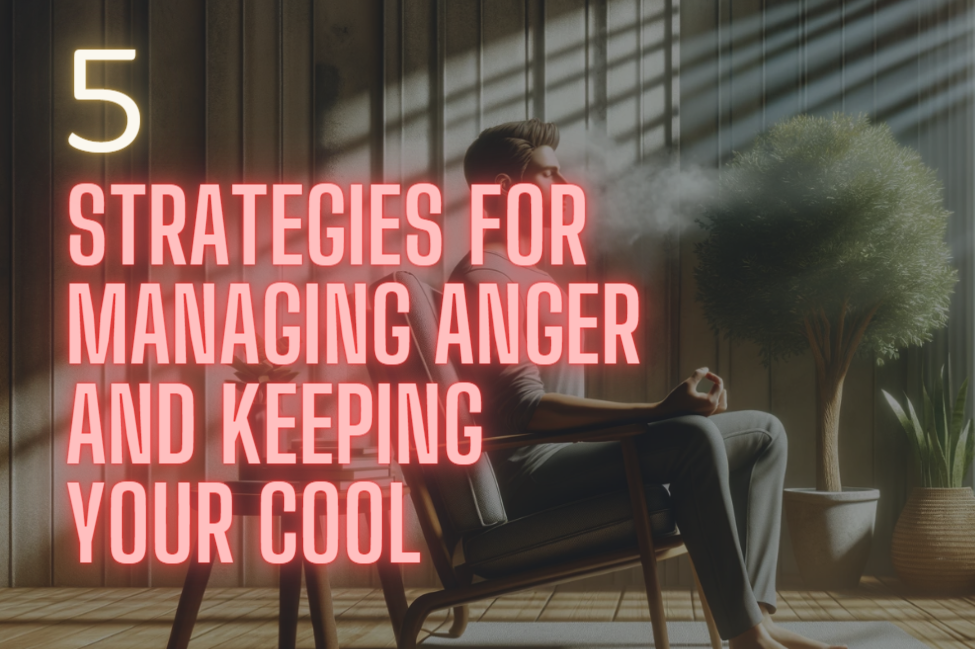
You know the feeling—your heart races, your cheeks flush, and your hands clench. Anger’s taking hold. But hold up—you’re in charge, not your temper.
With these five savvy strategies, you’re about to learn how to spot what ticks you off, calm down on the quick, and turn that fiery energy into something positive.
Let’s dive in and transform how you handle the heat, keeping your cool no matter what life throws at you.
Recognize Your Anger Triggers
Understanding your specific anger triggers is crucial in developing strategies to maintain composure. It’s about being proactive, not reactive. Start with anger journaling; it’s a powerful tool. You’ll track when and why you get angry, scribbling down the scenario, your feelings, and the intensity of your anger. Over time, you’ll notice patterns. Maybe it’s a particular remark, a type of interruption, or a certain time of day that sets you off. Recognizing these patterns is the first step to taking control.
Once you’ve pinpointed your triggers, it’s time to implement the timeout strategy. This isn’t just for kids—it’s an adult version of stepping back from the heat of the moment. When you feel your anger rising, give yourself permission to pause. Take several deep breaths, count to ten, or even leave the room if necessary. This break gives you a moment to cool down, reassess, and respond instead of react. It’s about creating a space where your emotions don’t dictate your actions.
Practice Deep Breathing Techniques
Building on your anger journal insights, you’ll find that breath control—a fundamental aspect of anger management—can significantly dampen the flames of your frustration. Deep breathing techniques, often a core component of mindfulness meditation, trigger your body’s relaxation response, shifting you away from anger’s edge.
Here’s how you can harness the power of your breath:
- Deep Diaphragmatic Breathing
- Inhale slowly through your nose, feeling your diaphragm expand.
- Hold your breath for a few seconds.
- Exhale slowly through your mouth, deflating like a balloon.
- Rhythmic Breathing
- Inhale for a count of four.
- Hold for a count of four.
- Exhale for a count of four.
- Pause for a count of four before the next breath.
Incorporating these methods into your daily routine, especially during moments of escalating tension, can help you maintain a level head. With practice, mindfulness meditation centered around your breathing patterns becomes second nature. You’ll notice a quicker, more effective relaxation response kicking in when anger arises.
Use Positive Self-Talk
Transitioning from breath control, your inner dialogue plays a pivotal role in defusing anger’s grip. When you’re on the edge, it’s the stories you tell yourself that can either escalate your emotions or calm the storm.
Positive self-talk isn’t about denying your feelings; it’s about managing them with a kinder, more rational approach.
Start by recognizing when you’re slipping into a negative narrative. Replace thoughts like ‘I can’t handle this’ with ‘I’m upset, but I’ll get through it.’ This shift in perspective can stop anger from spiraling out of control.
Integrate techniques like anger journaling to reflect on your experiences. It’s a way to process emotions constructively, allowing you to dissect what’s really bothering you and why. When you write it down, you’re taking a step back, giving yourself the chance to challenge and change your internal script.
Mindfulness meditation also supports positive self-talk. It centers you in the present moment, creating space between you and your reactions. You’ll learn to observe your thoughts without judgment and respond rather than react.
Exercise for Emotional Release
Shifting your focus to physical activity, you’ll find that exercise is a powerful tool for releasing pent-up anger and restoring emotional equilibrium. When you’re feeling heated, a brisk walk or a run can help dissipate that energy. But to truly harness the benefits of exercise, consider integrating mindful movement into your routine:
- Mindful Movement
- Yoga: Flow through poses with deep, controlled breathing.
- Tai Chi: Engage in this graceful martial art that emphasizes slow, deliberate movements.
Regularly channelling your anger into physical activity can transform negative energy into a positive outcome for your body and mind. It’s not just about the exercise itself, but also about being present in the moment, allowing the physical exertion to ground you and bring clarity.
To add another layer to your anger management strategy:
- Complementary Practices
- Anger journaling: After your workout, jot down any lingering feelings or thoughts.
- Reflect: Look for triggers or patterns in your anger journal that can be addressed.
Seek Constructive Resolution
Often, you’ll find that seeking a constructive resolution is crucial for effectively managing your anger and maintaining your composure. By aiming for a solution that addresses the root cause of your frustration, you can avoid the buildup of resentment that often accompanies unresolved issues.
One effective tool to aid in this process is anger journaling. By regularly documenting your feelings, you can track patterns and triggers, which can lead to deeper understanding and better management of your emotions.
Developing strong communication skills is also essential in the pursuit of constructive resolution. It’s about expressing your needs and feelings clearly without aggression or passivity. Practice active listening, which involves fully concentrating, understanding, responding, and then remembering what’s being said.
This approach not only helps diffuse tension but also fosters a cooperative environment where all parties feel heard and respected. Remember, it’s not about winning an argument but finding a middle ground that respects everyone’s perspective.
Frequently Asked Questions
How Can Keeping a Food Diary Help in Managing Anger and Identifying Potential Dietary Triggers?
By tracking what you eat, you’ll notice if poor food choices are making you hangry, a blend of hungry and angry. You may spot patterns of emotional eating which can spike stress levels. A food diary makes you aware of hunger-induced irritability.
It’s about finding a balance—recognizing which foods stabilize your mood and which to avoid. You’ll gain control over your reactions, preventing food from being a trigger for your anger.
Are There Any Specific Personality Types More Prone to Anger Issues, and How Can They Tailor Anger Management Strategies to Their Personality?
You might wonder if some personalities are more likely to struggle with anger. Indeed, anger-prone temperaments exist, but there’s good news: you can tailor anger management to fit your unique personality.
By identifying your triggers and responses, you can create personalized interventions. It’s not one-size-fits-all; your strategy should reflect who you are.
Can Altering Sleep Patterns Have a Significant Impact on Anger Management, and What Are the Best Practices for Sleep to Help Control Anger?
Altering your sleep patterns can indeed affect how you manage anger. Prioritize sleep hygiene to ensure quality rest, aligning with your circadian rhythm. This means sticking to a consistent bedtime, avoiding screens before sleep, and creating a restful environment.
Good sleep practices can reduce irritability and help you stay level-headed. Remember, when you’re well-rested, you’re better equipped to handle stress and keep your cool throughout the day.
How Does the Expression of Anger Differ Across Cultures, and What Are Some Culturally Sensitive Anger Management Strategies?
You’ll find that cultural norms heavily influence how anger is expressed. While some societies may view public displays of anger as acceptable, others consider them taboo, impacting emotion perception significantly.
To navigate this, you’ll need to learn and respect diverse cultural cues when managing anger. Tailor your strategies to these norms, ensuring you don’t inadvertently offend or escalate situations.
Being culturally aware is key to handling anger appropriately in a global context.
What Role Does Technology Play in Anger Management, and Are There Effective Digital Tools or Apps Designed to Help Control Anger in Real-Time?
Technology’s revolutionizing anger management. You’ve got emotion tracking wearables monitoring your stress levels, alerting you before you’re too angry. Virtual reality therapy immerses you in scenarios to practice keeping your cool.
These tools are more than gimmicks; they’re effective, real-time aids helping you control your anger. They teach you to recognize triggers and offer coping mechanisms, so you can manage your emotions smartly and calmly.
It’s high-tech help at your fingertips.
Conclusion
You’ve got the power to manage your anger. Remember, identify what sets you off, breathe deeply to stay calm, talk to yourself with kindness, and channel emotions through exercise. Aim for solutions, not conflicts. Keep practicing these strategies, and you’ll find yourself staying cool, even when the heat’s on.
It’s all about taking control before anger takes the wheel. You’ve got this!




